
- Gaudí's Architectural Masterpieces: A Guide to Barcelona's Iconic Structures
- Exploring the Unique Features of Gaudí's Buildings in Barcelona
- The Cultural Significance of Gaudí's Work in Barcelona
- Top 5 Must-Visit Gaudí Buildings in Barcelona
- How Gaudí's Designs Reflect Catalan Modernism in Barcelona
- Understanding the Influence of Nature in Gaudí's Architectural Style
Antoni Gaudí, the visionary architect of the early 20th century, transformed the landscape of Barcelona with his unique and imaginative designs. His work reflects a deep connection to nature, religion, and the vibrant culture of Catalonia, making his architectural masterpieces a vital part of the city's identity.
Among the most celebrated landmarks are the Sagrada Familia, Park Güell, and Casa Batlló, each showcasing Gaudí's innovative use of color, form, and texture. These structures not only attract millions of visitors each year but also represent the essence of **Gaudí's famous buildings in Barcelona**, captivating both art lovers and casual tourists alike.
Gaudí's Architectural Masterpieces: A Guide to Barcelona's Iconic Structures
Gaudí's architectural masterpieces are not merely buildings; they are a celebration of creativity and innovation deeply rooted in Catalan culture. Each structure tells a story, inviting visitors to explore the intricate details that reflect Gaudí's fascination with nature and geometry. His distinctive style combines elements of Gothic and Art Nouveau, resulting in structures that are both functional and artistically profound.
Among Gaudí's renowned works in Barcelona, the Sagrada Familia stands out not only for its towering spires but also for its intricate façade and breathtaking interior. This basilica, still under construction, is an emblem of faith and endurance, showcasing Gaudí's unique vision. Other notable works include:
- Parc Güell: A whimsical park adorned with colorful mosaics and organic forms.
- Casa Milà (La Pedrera): Known for its undulating stone façade and wrought-iron balconies.
- Casa Batlló: A striking building characterized by its skeletal structure and vibrant ceramic tiles.
Visiting these sites offers a glimpse into Gaudí's genius, merging architecture with nature. His use of light and color creates a sensory experience that captivates the imagination. For anyone exploring Barcelona, understanding the significance of Gaudí's creations is essential to appreciating the city's architectural heritage.
As you wander through Barcelona, consider the influence of Gaudí's masterpieces on contemporary architecture. His innovative approaches have inspired countless architects worldwide, allowing his legacy to endure far beyond the borders of Catalonia. Each visit to his iconic structures provides not just a visual feast but also a deeper understanding of the harmonious relationship between architecture and the natural world.
Exploring the Unique Features of Gaudí's Buildings in Barcelona
Exploring the unique features of Gaudí's buildings in Barcelona reveals a fascinating blend of artistic creativity and architectural innovation. One of the most striking aspects of his work is the use of organic shapes that mimic natural forms. This approach not only enhances the aesthetic appeal but also creates a harmonious relationship between the structures and their surroundings.
Another noteworthy characteristic of Gaudí's architecture is his exceptional use of color and materials. He often incorporated vibrant mosaics and ceramic tiles, which add a lively touch to his buildings. The interplay between light and texture creates dynamic visual experiences that change throughout the day, inviting visitors to witness the buildings from multiple perspectives.
Gaudí was also a pioneer in structural techniques, utilizing innovative engineering solutions that were ahead of his time. His work includes catenary arches, hyperboloid structures, and a variety of other elements that ensure both stability and beauty. Some key features include:
- Natural Ventilation: Designs that promote airflow, enhancing comfort within.
- Integrated Landscaping: Structures that blend seamlessly with natural surroundings, as seen in Parc Güell.
- Symbolism: Numerous elements imbued with religious and cultural significance, particularly in the Sagrada Familia.
In conclusion, Gaudí's buildings are not just architectural feats but also cultural treasures that encapsulate the spirit of Barcelona. His unique features, from organic forms to vibrant colors, provide visitors with an immersive experience, reminding us of the profound connection between architecture and nature. For anyone exploring the city's landscape, understanding these elements deepens the appreciation for Gaudí's enduring legacy.
The Cultural Significance of Gaudí's Work in Barcelona
Gaudí's work in Barcelona is not just about architectural beauty; it embodies a rich cultural narrative that reflects the city's history and identity. His designs are deeply intertwined with Catalan culture, showcasing the importance of regional heritage. The significance of his work can be summarized through key aspects, including:
- Symbolic Representations: Many structures incorporate elements that represent Catalan identity, such as the use of local materials and traditional craftsmanship.
- Catalan Modernism: Gaudí's distinctive style is a cornerstone of this artistic movement, promoting a sense of uniqueness and pride in local culture.
- Community Engagement: His projects often involved local artisans, creating a collaborative spirit that fosters cultural continuity.
The cultural significance of Gaudí's buildings extends beyond aesthetics; they serve as a reminder of the interplay between art and everyday life in Barcelona. Each structure invites reflection on the relationship between society and architecture, emphasizing the role of design in shaping communal experiences. Gaudí's innovative approach helped establish a new architectural language, inspiring future generations to explore the possibilities within their own cultural contexts.
Moreover, Gaudí's work promotes a sense of belonging among locals and visitors alike, creating spaces that resonate with emotional and spiritual connections. His emphasis on organic forms and nature reflects a broader cultural appreciation for the environment, encouraging sustainable practices in architecture. This commitment to nature is evident in:
- Integration of Nature: Buildings like Parc Güell highlight how architecture can coexist harmoniously with the natural landscape.
- Spiritual Influence: The Sagrada Familia, with its intricate details and religious symbolism, serves as a pilgrimage site, reinforcing cultural and spiritual ties.
- Artistic Innovation: Gaudí's use of vibrant colors and unconventional shapes challenges conventional architectural norms, inspiring creativity and artistic exploration.
In essence, the cultural significance of Gaudí's work in Barcelona lies in its ability to convey a narrative that transcends time and space. His designs encourage dialogue between the past and present, celebrating the rich tapestry of Catalan culture while inspiring future generations. For art lovers and cultural enthusiasts, understanding this significance is key to fully appreciating the transformative impact of Gaudí's genius on Barcelona's architectural landscape.
Top 5 Must-Visit Gaudí Buildings in Barcelona
Barcelona is home to some of the most stunning architectural marvels designed by Antoni Gaudí. Among Gaudí's famous buildings in Barcelona, five stand out as must-visit sites that showcase his unmatched creativity and unique style. These buildings not only serve as iconic landmarks but also offer a glimpse into Gaudí's innovative approach to architecture.
The first on the list is the Sagrada Familia, an awe-inspiring basilica that has been under construction since 1882. Its intricate facades and towering spires combine to create a spiritual experience, reflecting Gaudí's deep religious beliefs. Next is Park Güell, a whimsical public park filled with colorful mosaics and organic forms that blend seamlessly with nature, inviting visitors to explore its enchanting pathways.
Casa Batlló is another architectural gem that captivates with its skeletal structure and vibrant ceramic tiles, symbolizing the beauty of nature. Additionally, Casa Milà, popularly known as La Pedrera, impresses with its undulating stone facade and innovative rooftop chimneys, which resemble warriors standing guard. Finally, the Palau Güell, a lesser-known but equally fascinating work, showcases Gaudí's early style and remarkable use of space and light.
These five must-visit Gaudí buildings in Barcelona not only highlight his extraordinary talent but also illustrate the harmonious relationship between architecture and the natural world. Each site offers a unique experience, allowing visitors to appreciate the profound significance of Gaudí's contributions to the city's architectural landscape.
How Gaudí's Designs Reflect Catalan Modernism in Barcelona
Gaudí's designs are a quintessential embodiment of Catalan Modernism, a movement that emerged in the late 19th and early 20th centuries, characterized by a rejection of the rigid forms of Neoclassicism and an embrace of organic shapes and vibrant colors. His architecture, with its fluid lines and intricate details, reflects a harmonious relationship with nature, which is a hallmark of Catalan Modernism. This approach allows Gaudí's buildings to blend seamlessly into their surroundings, as seen in the sinuous forms of Casa Batlló and the enchanting pathways of Park Güell.
One significant aspect of Gaudí's work is his innovative use of materials and techniques, which were revolutionary for his time. He often employed local materials and traditional craftsmanship, reinforcing a sense of place and cultural identity. This commitment to using local resources not only supports regional artisans but also aligns with the Modernist philosophy of celebrating Catalonia's unique heritage. For instance, the colorful mosaics of Park Güell and the stonework of La Pedrera exemplify Gaudí's dedication to integrating local artistry within his designs.
Furthermore, Gaudí's architecture is imbued with profound symbolism, particularly in religious contexts. The Sagrada Familia, perhaps his most famous work, is a testament to this, with its towering spires and intricate façades that narrate biblical stories. This spiritual dimension resonates deeply with the Catalan identity, emphasizing a connection to both the land and its history. Gaudí's ability to convey such narratives through architecture is a key aspect of how his work reflects the essence of Catalan Modernism.
In summary, Gaudí's designs exemplify the principles of Catalan Modernism through their organic forms, innovative use of materials, and deep-rooted symbolism. These elements not only enhance the aesthetic allure of his buildings but also foster a sense of cultural pride among locals. As a result, Gaudí's architecture has become a symbol of Barcelona, captivating visitors and serving as a lasting testament to the rich heritage of Catalonia.
Understanding the Influence of Nature in Gaudí's Architectural Style
Understanding the influence of nature in Gaudí's architectural style reveals a profound connection between his designs and the natural world. Gaudí believed that architecture should reflect the organic forms found in nature, leading to structures that mimic plant life and geological formations. This approach is evident in features such as:
- Curvilinear Shapes: Many of his buildings exhibit fluid, wave-like forms that echo the shapes of trees and mountains.
- Natural Light: Gaudí masterfully utilized light to enhance the spatial experience, allowing sunlight to interact dynamically with his materials.
- Symbolism of Nature: Elements like leaves and flowers are often incorporated into his designs, imbuing them with deeper meanings related to growth and life.
One of the most striking aspects of Gaudí's work is his ability to integrate structures within their environments, enhancing both aesthetics and functionality. By observing natural patterns, he developed techniques to ensure that his buildings not only complemented but also celebrated their surroundings. This integration promotes a sense of harmony, making each project feel like an extension of the landscape. Gaudí often emphasized:
- Eco-Friendly Materials: He preferred to use local materials, which contributed to the sustainability of his designs.
- Landscape Integration: Structures like the Park Güell demonstrate how architecture can coexist with nature, creating public spaces that inspire and engage.
Moreover, Gaudí’s architectural philosophy encourages a dialogue between humanity and the environment. His attention to organic design principles serves as a reminder of the importance of preserving nature while innovating. This ethos is particularly evident in the Sagrada Familia, where the intricate details mimic natural forms and encourage contemplation of the divine within the natural world. Gaudí's work not only transforms architectural practice but also fosters a greater appreciation for the interconnectedness of all living things.
In conclusion, studying Gaudí's influence from nature expands our understanding of his architectural genius. His ability to emulate organic forms and integrate buildings with their environments establishes a legacy that resonates through contemporary architecture. By appreciating this relationship, we can gain insights into creating spaces that honor both human creativity and the beauty of the natural world.
 Experience the Gothic Quarter's lively nightlife!
Experience the Gothic Quarter's lively nightlife!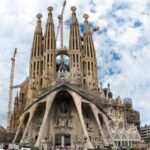 Legacy of Antoni Gaudí: Sagrada Familia Masterpiece
Legacy of Antoni Gaudí: Sagrada Familia Masterpiece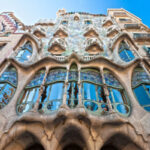 Gaudí's Famous Barcelona Buildings
Gaudí's Famous Barcelona Buildings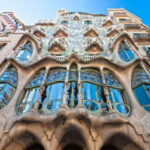 Famous Gaudí-designed buildings in Barcelona
Famous Gaudí-designed buildings in BarcelonaIf you want to know other articles similar to Gaudí's famous buildings in Barcelona you can visit the category WHERE YOU CAN GO.
Deja una respuesta

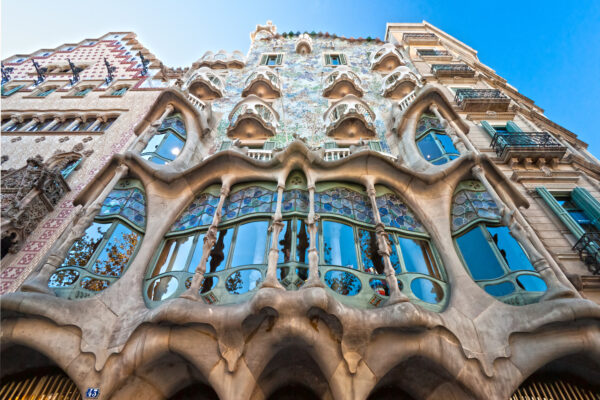
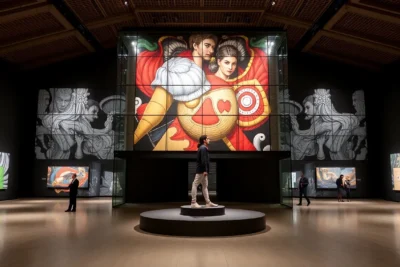
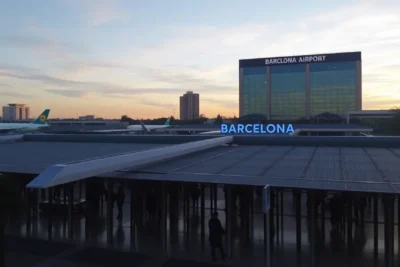
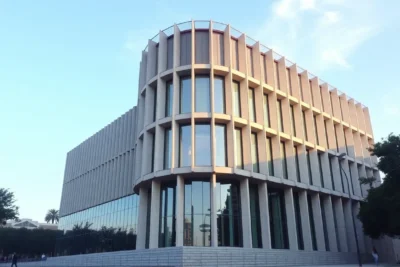
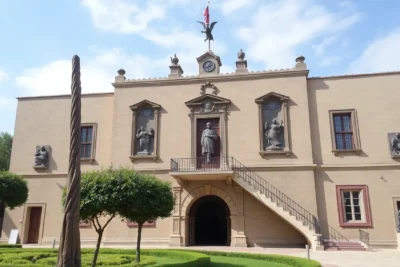
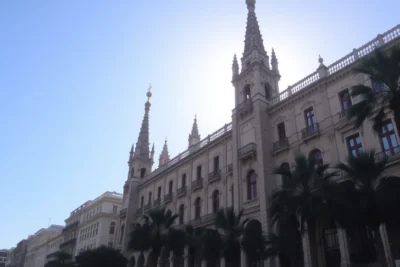

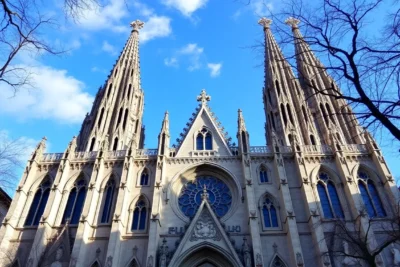
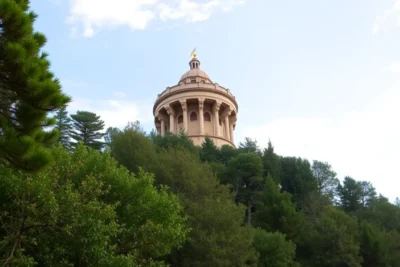
Read more!